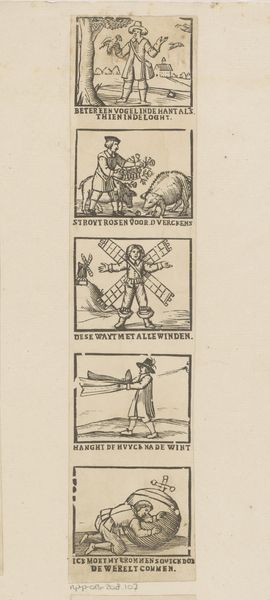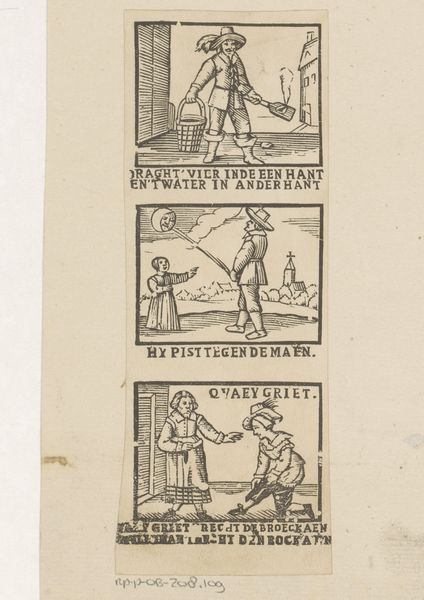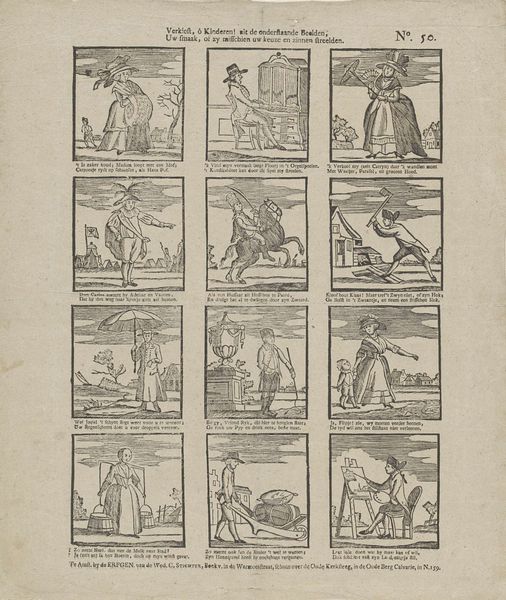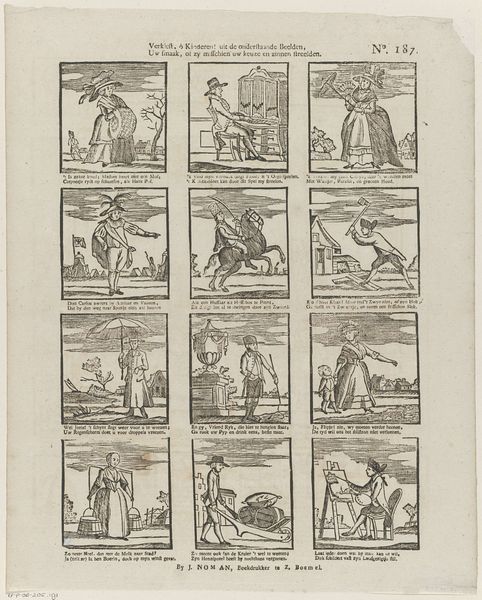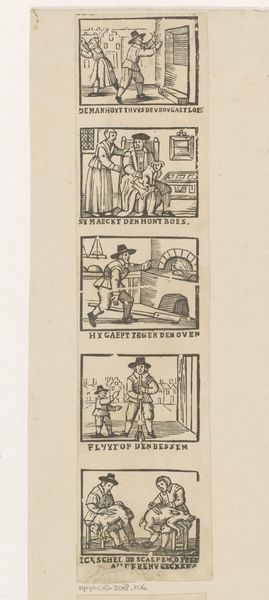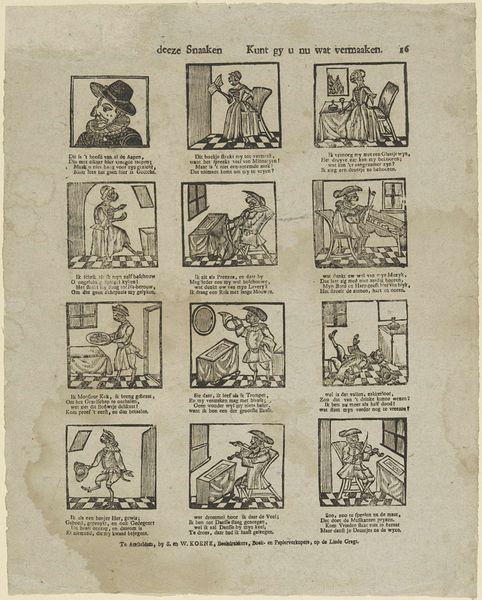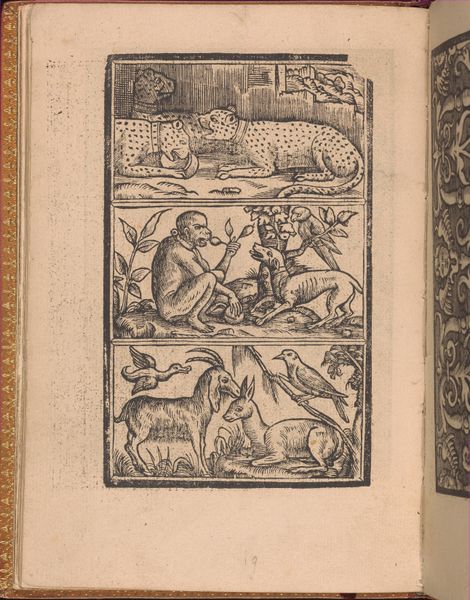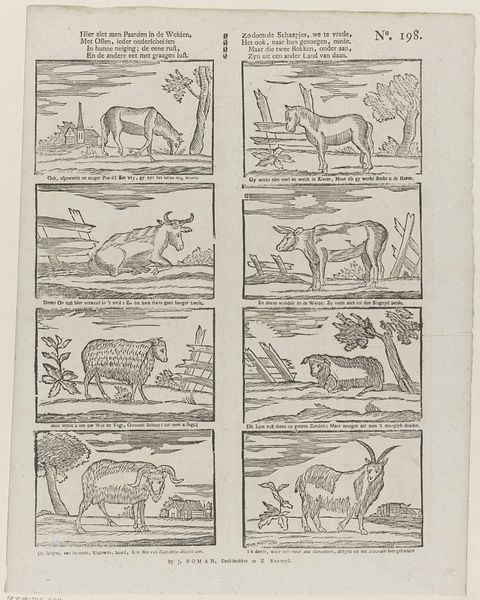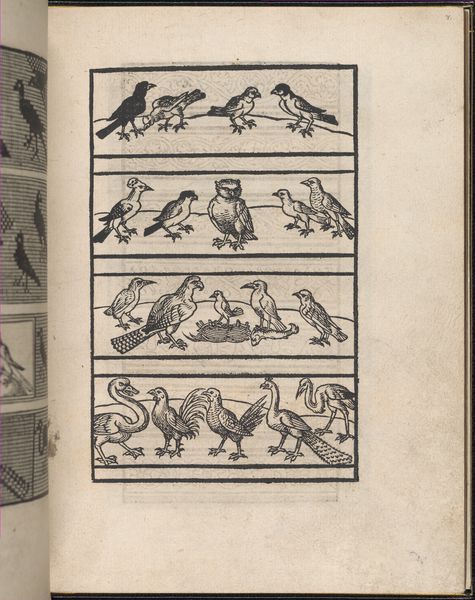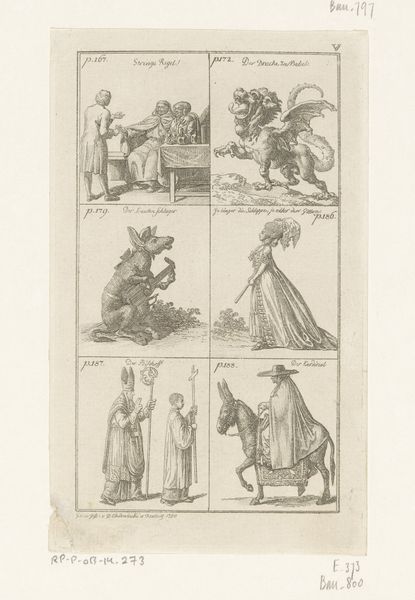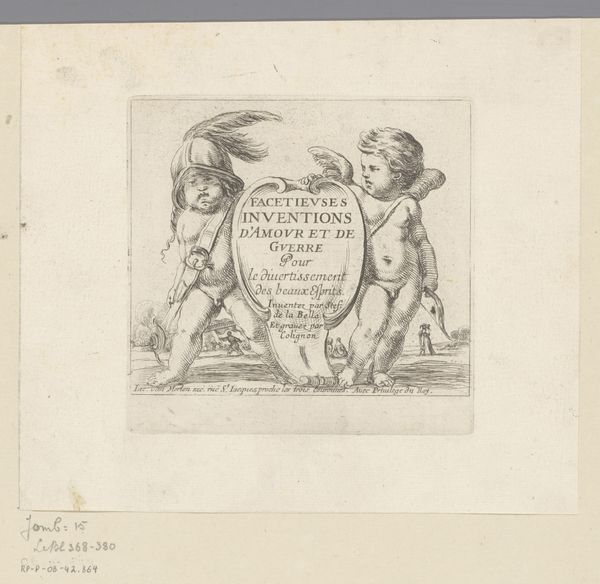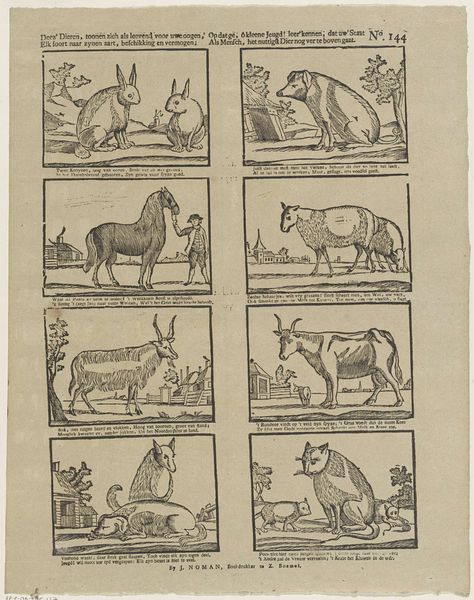![Afbeeldingh hoe seven wyven vechten om een mans broeck ende de vrou de broeck aentrecht [(...)] by Anonymous](/_next/image?url=https%3A%2F%2Fd2w8kbdekdi1gv.cloudfront.net%2FeyJidWNrZXQiOiAiYXJ0ZXJhLWltYWdlcy1idWNrZXQiLCAia2V5IjogImFydHdvcmtzL2E4ZmUxOTg0LTY2ZDItNDI0Yy04ODQzLTkzMmMxM2E4N2UxYy9hOGZlMTk4NC02NmQyLTQyNGMtODg0My05MzJjMTNhODdlMWNfZnVsbC5qcGciLCAiZWRpdHMiOiB7InJlc2l6ZSI6IHsid2lkdGgiOiAxOTIwLCAiaGVpZ2h0IjogMTkyMCwgImZpdCI6ICJpbnNpZGUifX19&w=3840&q=75)
Afbeeldingh hoe seven wyven vechten om een mans broeck ende de vrou de broeck aentrecht [(...)] Possibly 1700 - 1865
0:00
0:00
anonymous
Rijksmuseum
print, engraving
#
narrative-art
# print
#
comic
#
genre-painting
#
engraving
Dimensions: height 262 mm, width 54 mm
Copyright: Rijks Museum: Open Domain
Curator: This is a fascinating, anonymous print, "Afbeeldingh hoe seven wyven vechten om een mans broeck ende de vrou de broeck aentrecht [(...)]", which translates to “Image how seven women fight over a man’s pants and the woman straightens the pants,” dated sometime between 1700 and 1865. Editor: My immediate impression is that this print feels like an early form of comics—narrative broken down into panels. The engraving work seems simple, yet carries great clarity in communicating the figures and symbolic forms of a common life. Curator: Precisely. Each panel showcases a different proverb or saying. They give us insight into social values, cultural understandings and hierarchies that were common then. Consider the recurring motifs – the devil, everyday objects turned symbolic – and what those images signified to the society. Editor: For me, it's all about the labour involved in such production. The artist is really showcasing skill through engraving, even within such a restricted space, and it raises questions about distribution and consumption during its time. Who would have owned such prints, and where would they display it? It prompts thoughts on the laboriousness of craft set against more established "high art" mediums. Curator: I'm intrigued by its purpose. These weren't just decorative pieces; prints like these were didactic tools, instruments for communicating moral lessons, or poking fun at societal flaws in ways accessible to broader audiences. Notice how power, satire, and perhaps even anxieties, surface across all these depictions of common proverbs and tales. Editor: I agree. And I’m drawn back to the print's tangible presence: The ink, paper, the physical act of printing. How these accessible materials translated into images, and subsequently, transferred cultural ideas throughout different socio-economic layers of society fascinates me the most. Curator: Looking at this work prompts contemplation on the socio-political environment which shaped the symbolism itself, and the audience’s potential relationship with it. What anxieties or cultural lessons were at play? Editor: Reflecting on its physical composition alongside its possible cultural weight offers fresh perceptions. In this light, a closer look can make something rather old seem utterly contemporary!
Comments
No comments
Be the first to comment and join the conversation on the ultimate creative platform.

